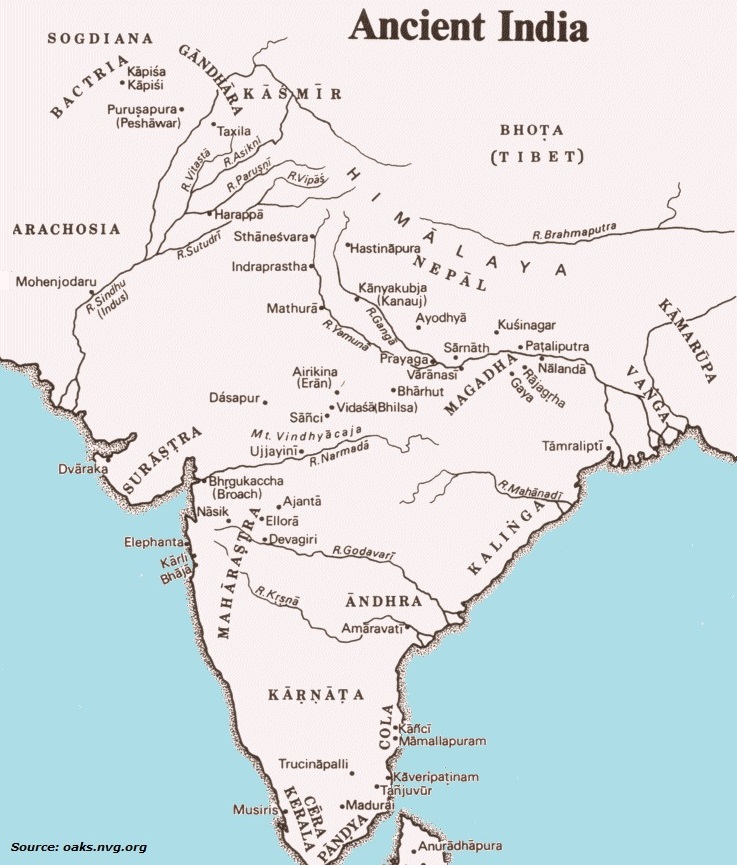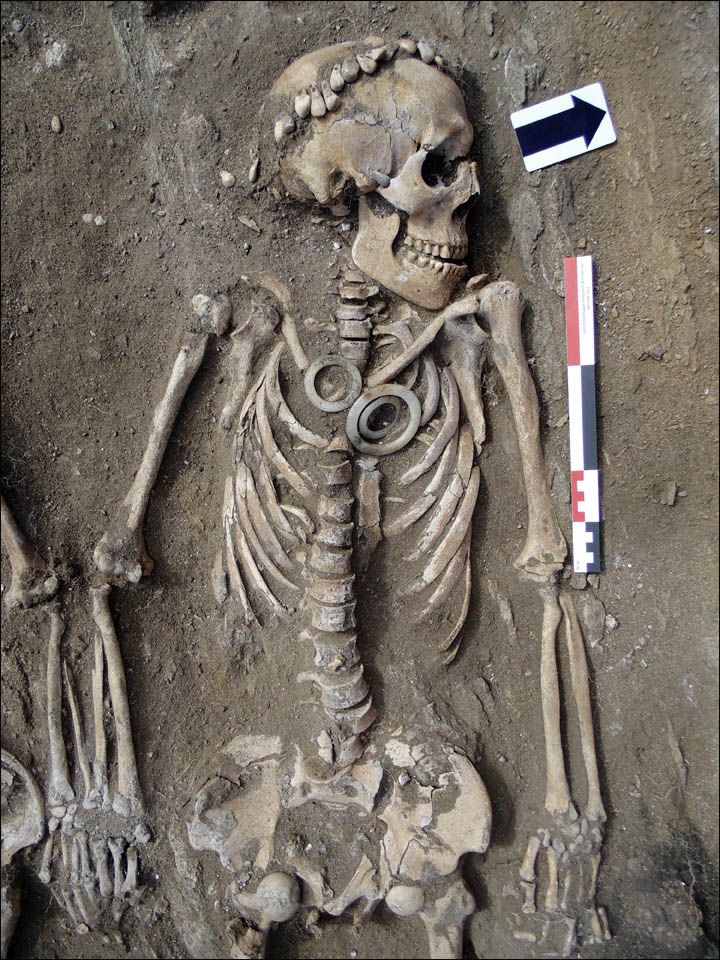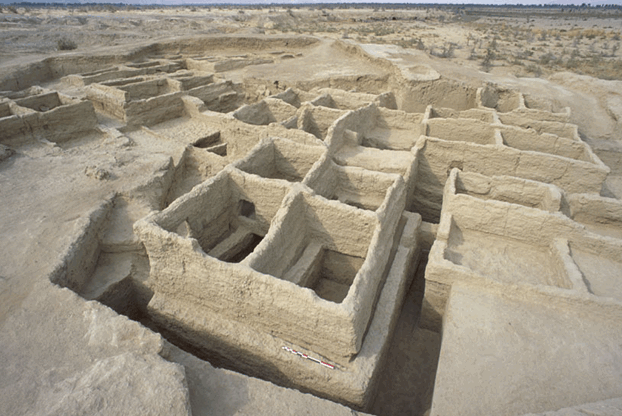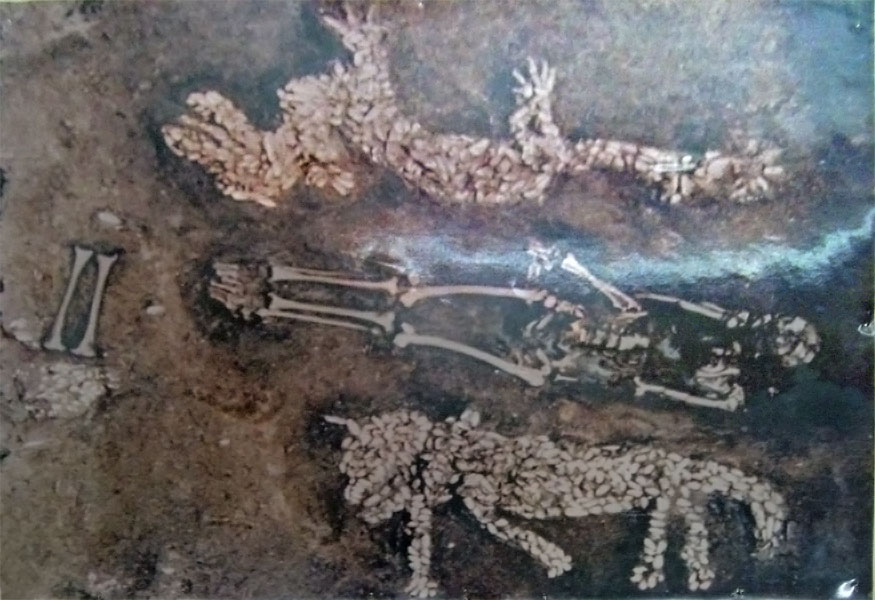Neolithic sites in india pdf
As with Neolithic sites, the densest recorded number of Kushan remains in Kashmir are in Baramulla district, most likely as this route passed through to the Kushan capitals and major cities at Taxila, Peshawar, Begram and Mathura (Shah 2013).
The lesser known Neolithic culture of Northeast India was probably influenced by prominent Neolithic cultures of surrounding regions. Rice cultivation is one of the main characteristic features of East Asian and Southeast Asian Neolithic cultures.
Download PDF Download. Share. Export region for archaeobotanical studies as it was the region in which second urbanism emerged in India and where the first Indian State emerged. The Neolithic of the Ganga Plain is characterized by sedentism, and an economy based on domesticated cattle and rice agriculture (Pandey, 1988, Allchin and Allchin, 1997, Mandal, 1997). Some of the sites studied in
This essay discusses the preliminary results of recent archaeological investigations into stone axe production and exchange processes at a Neolithic hilltop settlement in South India. The site in question comprises a stone-lined circular structure situated on a plateau area on the side of a
neolithic period, the copper implements being very likely used by the original non-Aryan inhabitants of India, their Aryan conquerors bging fully acquainted with the use of iron from the time of their first settle
The Neolithic site of Silbury Hill in Wiltshire, southern England, is one example of the large ceremonial monuments constructed across the British Isles in this period. The Neolithic British Isles is about the remains of tribes living in the islands from about 4000 BC to 2,500 BC.
Other Important Neolithic Sites In Kashmir valley, Burzahom (meaning place of birth) and Gufkral (meaning cave of the potter) are important Neolithic / Chalcolithic sites. In Uttar Pradesh, Belan valley is a Neolithic site known as earliest rice-farming community in India.
radiocarbon dates of other Neolithic cultural sites in this region, the botanical remains from this site have been discussed within a time range 3rd–2nd millennium BC .
PDF We present archaeobotanical data based on plant macroremains obtained from three archaeological sites in the Ganga Plain. The paper provides insight into a …
CBSE Class 6 Social Science – Neolithic site. Worksheets have become an integral part of the education system. Worksheets are very critical for every student to practice his/ her concepts.
in the foundation and establishment of new settlement sites in Neolithic south India. Introduction The Deccan plateau of south India is a large, arid region featuring rich Neolithic period remains (see Figure 1). Focused in particular on the often spectacular granite hills that dot an otherwise largely featureless landscape, south Indian Neolithic sites reveal a unique manifestation of the
The development of Neolithic culture appears to have been a gradual rather than a sudden change. Pottery is another element that makes the dating of the Neolithic problematic. In some regions, the appearance of pottery is considered a symbol of the Neolithic, but this notion makes the term Neolithic
TheInfoList.com – (Neolithic) ↓ ChalcolithicThe Neolithic Neolithic (/ˌniːəˈlɪθɪk/ ( listen)[1]) was a period in the development of human technology, beginning about 10,200 BC, according to the ASPRO chronology, in some parts of the Middle East, and later in other parts of the world[2] and ending between 4500 and 2000 BC.
Neolithic Archaeology in Southeast Asia This chapter is a literature review aimed at identifying viable comparative areas and sites for An S ơn and contextualising the neolithic of southern Vietnam.
The prehistoric site of Mehrgarh in Baluchistan (modern Pakistan) is the earliest Neolithic site in the north-west Indian subcontinent, dated as early as 8500 BCE . Neolithic domesticated crops in Mehrgarh include more than 90% barley and a small amount of wheat.
Open Research Stone Axe Technology in Neolithic South
which of the following was the first Neolithic Answers
The important Neolithic sites excavated in south India are Maski, Brahmagiri, Hallur and Kodekal in Karnataka, Paiyampalli in Tamil Nadu and Utnur in Andhra Pradesh. The chief characteristic features of the Neolithic culture are the practice of agriculture, domestication of animals, polishing of stone tools and the manufacture of pottery. In fact, the cultivation of plants and domestication of
In India: Neolithic agriculture in the Indus valley and Baluchistan …Neolithic” stage is reported at Gufkral, another site in the Kashmir region, which has been …
The first stage of neolithic life in S India was the ash mound sites (3000 – 2000 BC). In the beginning of the second stage now, they used to live on granite hill tops in wattle and daub houses. Tools were still mostly made of stone. In the third stage we find that though the stone tools continue, there is an increase in the number of copper and bronze tools.

Neolithic Age = New Stone Age Details Cord-impressed pottery in Eastern India Evidences of use of Terracotta in Eastern India (Baked Clay) Evidence of initial cotton cultivation in Rakhigarhiand Mehrgarh Mehrgarh (7500 2000 BC) in Balochistan, Pakistan was the first site in South Asia (Indian Sub-continent) where agriculture started. It was much more advanced. Major crops Barley, Wheat
Mesopotamia is the site of the earliest developments of the Neolithic Revolution from around 10,000 BC. Early Neolithic farming was limited to a narrow range of plants, both wild and domesticated, which included einkorn wheat , millet and spelt , and to the keeping of dogs , sheep and goats .
within the Neolithic community as well as the development of Neolithic wall art, since there are no other Neolithic sites at which the wall paintings were found of a …
Our site uses cookies to improve your experience. You can find out more about our use of cookies in About Cookies , including instructions on how to turn off cookies if you wish to do so. By continuing to browse this site you agree to us using cookies as described in About Cookies .
The Mesolithic sites in distribution cover almost the entire country except a few areas like Indo- gangetic plain, Assam and most of the Western coast of India. In Indo-gangetic plain, their absence can be explained by the lack of primary raw material (stones) for making tools.
In India also, most of the rock art, especially paintings and carvings, have been known to exist from the Mesolithic Age, which continued to Neolithic Age, Iron Age and early historic period. This art not only reflects the cultural life of the times but also a fine aesthetic sense comparable to modern paintings.
Neolithic Site of Lawnongthroh. The first excavation was conducted during the years 2013–2014 at the site of Lawnongthroh in Ri- Bhoi District of Khasi hills, Meghalaya (Mitri, Marco, 2004, 2005 and Mitri, Marco et al. 2015: 33–42).
South Indian Neolithic..Also visit the Bellary Archaeological Project webpages Much of Dorian’s primary archaeobotanical lab work has focused on identifying archaeological plant remains from prehistoric sites in India, especially south India.
The Neolithic Age started in India around 7,000 B.C. It was the third and last part of the Stone Age. The other two parts were – It was the third and last part of the Stone Age.

19/01/2017 · Archaeological evidences support similarities among widely separated Neolithic sites in these regions 33 and plausibility of migration of population 34. I’d like to know more, but Silk Road 5 and 6 ka stretching into India, I don’t think so.
This essay discusses the preliminary results of recent archaeological investigations into stone axe production and exchange processes at a Neolithic hilltop settlement in South India. The site in question comprises a stone-lined circular structure situated on a plateau area on the side of a topographically complex hill, known locally as Hiregudda. Across the plateau, extensive surface scatters
Neolithic Sites: At the moderately important sites Celts, flakes, chisels, hammers, corn-crushers, mealing stones, cores, pot shreds and linchets were commonly met with.
List of the Mesolithic and Neolithic Sites in India. 4. Pottery (a) Different types of potteries were used by the people of the Chalcolithic phase. The Black-and-Red pottery among them was quite
The Chalcolithic Culture Jagranjosh.com
Archaeology. Archaeologists use the remains of the past to help solve the puzzles of history. Whether you’re curious about ancient cultures or are considering a career as an archaeologist yourself, these resources can help you put it all together.
This page shows answers for question: which of the following was the first Neolithic site to be noticed in India ?a.lingsuryur b.chirand c.mehrgarh d.kolidihwa. Find right answer with solution and explaination of asked question. Rate and follow the question.Get Answer key for asked question.
1.2 – The Neolithic Age.pdf – Download as PDF File (.pdf), Text File (.txt) or read online. Scribd is the world’s largest social reading and publishing site. Search Search – top web design tutorial sites The earliest Neolithic sites in South Asia are Bhirrana in Haryana dated to 7570-6200 BC, [30] and Mehrgarh, dated to between 6500 and 5500 BC, in the Kachi plain of Baluchistan, Pakistan; the site has evidence of farming (wheat and barley) and herding (cattle, sheep and goats). In South India, the Neolithic began by 6500 BC and lasted until around 1400 BC when the Megalithic transition period
7/05/2014 · The prehistoric site of Mehrgarh in Baluchistan (modern Pakistan) is the earliest Neolithic site in the north-west Indian subcontinent, dated as early as 8500 BCE . Neolithic domesticated crops in Mehrgarh include more than 90% barley and a small amount of wheat.
Burzahom was the first Neolithic site to be discovered in Kashmir. It is located on a ‘karewa’ between the banks of the Dal Lake and the Zabarvan hills, about …
sites, sites in the plateaus and rock-shelter sites. Neolithic cultures of the Indian subcontinent: Early farming communities of Baluchistan: Mehrgarh and Kili-Gul-Muhammad. Neolithic culture in Kashmir. 3 Neolithic culture in the Central Ganga and Vindhyan region: Koldihwa, Mahagara, Lahuradewa etc. Eastern Neolithic sites: Chirand, Chechar Senuwar, Kuchai, and Baidyapur and the Neolithic
description of sites in central India the results of one simulation study of the Neolithic transition in the Indus Valley corroborated the hypothesis of an independent South Asian Neolithic
Cuisine, argues the author, is like language – it can be adopted, adapted or modified through time. The evidence from actual words for food is also used, together with seed assemblages and types of pottery to chronicle changing food cultures in Neolithic and later India.
distributions and cluster of sites, the development of Neolithic pattern in India may broadly be divided into three main broad groups: (i) Eastern Group (Vindhyan region, middle Ganga plain, Chotanagpur
Prehistoric sites are reported from the entire length and breadth of India. Most of these are surface sites, and invite less attention and significance compared to the few sites that are buried. The systematic excavation of prehistoric sites has contributed to the understanding of typo-technological evolution in the backdrop of time and space. However, the early artifact bearing sites in
Cord-impressed Pottery in Neolithic-Chalcolithic context of Eastern India 79 (Sharma 1966). Later on this ware has been reported from several sites of northern
The ESA sites are found in the valley of river Soan or Sohan in Punjab (now in Pakistan), Kashmir and the Thar desert. The ESA tools have also been found in the valleys of Narmada, in the desert areas of Didwana in Rajasthan and in the caves and rock shelters of Bhimbetka near Bhopal in Madhya Pradesh roughly belonging to 1, 00,000 B.C.
Neolithic−Early historic (2500–200 BC) plant use The
(PDF) A Simulation of the Neolithic Transition in the

Stone Axe Technology in Neolithic South India New
Mountain environment and early human adaptation in NW

Development of Agriculture and Iron technology in India
Palaeoethnobotanical record of cultivated crops and


The Wall Paintings of Çatalhöyük (Turkey) Materials
CBSE Class 6 Social Science Neolithic site Practice
application of composites in aerospace – Preliminary Report on the Excavations of Neolithic sites
Archaeology ThoughtCo


Kashmir Today Burzahom
ARCHEOLOGY Neolithic Cattle-Keepers of South India A
6 Comments on Neolithic sites in india pdf
Noah
This essay discusses the preliminary results of recent archaeological investigations into stone axe production and exchange processes at a Neolithic hilltop settlement in South India. The site in question comprises a stone-lined circular structure situated on a plateau area on the side of a topographically complex hill, known locally as Hiregudda. Across the plateau, extensive surface scatters
(PDF) A Simulation of the Neolithic Transition in the
Archaeology ThoughtCo
Luke
Archaeology. Archaeologists use the remains of the past to help solve the puzzles of history. Whether you’re curious about ancient cultures or are considering a career as an archaeologist yourself, these resources can help you put it all together.
The Near-Eastern Roots of the Neolithic in South Asia PLOS
Palaeoethnobotanical record of cultivated crops and
Open Research Stone Axe Technology in Neolithic South
Elizabeth
Prehistoric sites are reported from the entire length and breadth of India. Most of these are surface sites, and invite less attention and significance compared to the few sites that are buried. The systematic excavation of prehistoric sites has contributed to the understanding of typo-technological evolution in the backdrop of time and space. However, the early artifact bearing sites in
CBSE Class 6 Social Science Neolithic site Practice
The Chalcolithic Culture Jagranjosh.com
Alexandra
The important Neolithic sites excavated in south India are Maski, Brahmagiri, Hallur and Kodekal in Karnataka, Paiyampalli in Tamil Nadu and Utnur in Andhra Pradesh. The chief characteristic features of the Neolithic culture are the practice of agriculture, domestication of animals, polishing of stone tools and the manufacture of pottery. In fact, the cultivation of plants and domestication of
Article Download Page PERSONAL WEB PAGE DISCLAIMER
Ceramics seeds and culinary change in prehistoric India
Neolithic Revolvy
Jacob
The Neolithic Age started in India around 7,000 B.C. It was the third and last part of the Stone Age. The other two parts were – It was the third and last part of the Stone Age.
Neolithic TheInfoList.com
Preliminary Report on the Excavations of Neolithic sites
Mason
sites, sites in the plateaus and rock-shelter sites. Neolithic cultures of the Indian subcontinent: Early farming communities of Baluchistan: Mehrgarh and Kili-Gul-Muhammad. Neolithic culture in Kashmir. 3 Neolithic culture in the Central Ganga and Vindhyan region: Koldihwa, Mahagara, Lahuradewa etc. Eastern Neolithic sites: Chirand, Chechar Senuwar, Kuchai, and Baidyapur and the Neolithic
Palaeoethnobotanical record of cultivated crops and
Mesolithic Age in India General Knowledge Today
Comments are closed